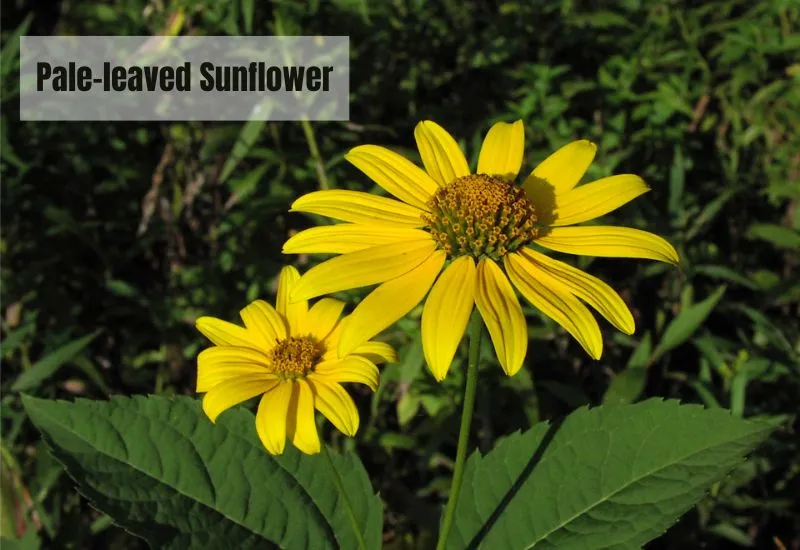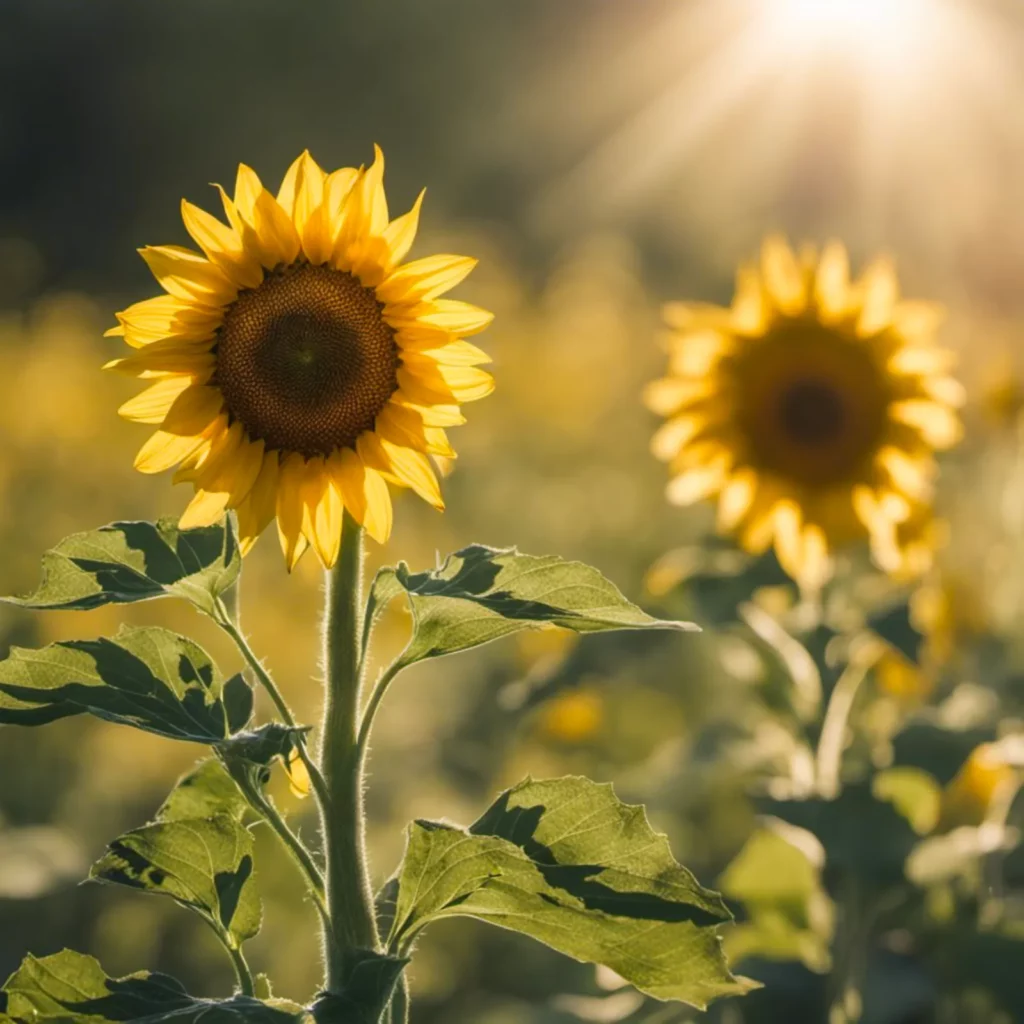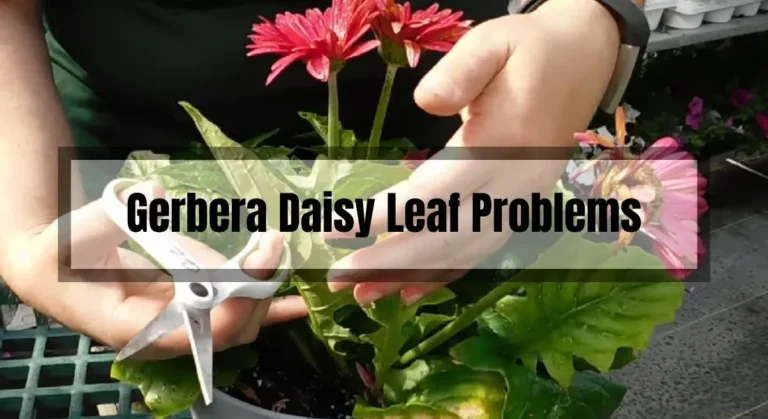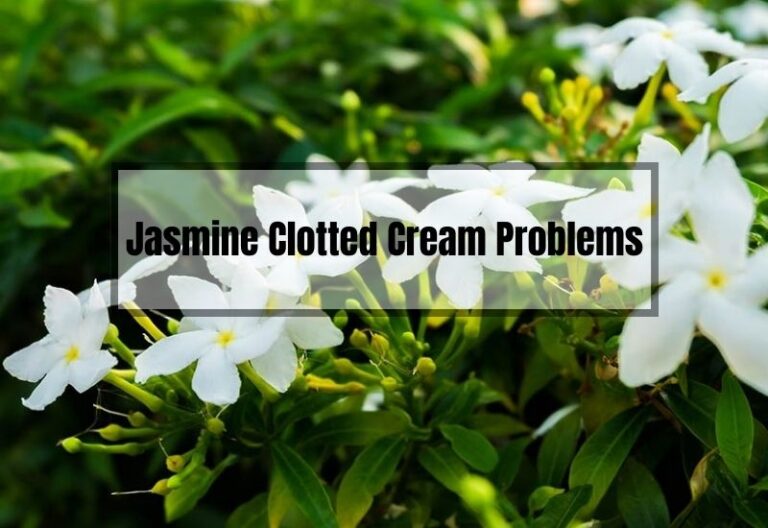Pale-Leaved Sunflower: Characteristics and Growing Tips
From Louise: Passionate about gardening, I specialize in plant care and flower knowledge. I’m here to share my expertise and assist with your gardening queries. Feel free to ask any questions or seek advice on lawn care—I’ll respond within 24 hours!
If you’re looking for a beautiful and hardy native plant to enhance your garden, the Pale-leaved Sunflower (Helianthus strumosus) is a great option. This deciduous perennial is known for its striking yellow flowers and pale green leaves, which inspired its name. It typically grows three to eight feet tall and thrives in diverse environments, from woodlands to meadows and riverbanks.
Whether you’re an experienced gardener or a beginner, the Pale-leaved Sunflower is a great addition to any garden.
It adds color and attracts pollinators like bees and butterflies, making it a valuable asset to your outdoor space. In this article, we’ll cover everything from cultivation and maintenance to interesting facts about this beautiful plant.
Key Takeaways
- The Pale-leaved Sunflower is a hardy native plant that adds color and attracts pollinators to your garden.
- This deciduous perennial thrives in diverse environments, from woodlands to meadows and riverbanks.
- Whether you’re an experienced gardener or a beginner, the Pale-leaved Sunflower is a valuable asset to any outdoor space.

Pale-Leaved Sunflower
If you’re looking for a unique and stunning plant to add to your garden, the pale-leaved sunflower (Helianthus strumosus) is an excellent choice.
This herbaceous perennial is native to North America and can be found in a variety of habitats, from forests to meadows to the shores of rivers or lakes.
History
The pale-leaved sunflower has a long and interesting history of use by Native American tribes. The Iroquois used a decoction of the roots of the plant to treat intestinal worms, while the Cherokee used it to treat snakebites.
The plant was also used as a dye for textiles, with the flowers producing a yellow dye and the roots producing a red dye.
Characteristics
The pale-leaved sunflower is a deciduous rhizomatous perennial that can grow from three to eight feet in height.
It has a smooth stem that may be difficult to distinguish from other sunflowers, as it is the most variable of the sunflowers. However, there are some distinguishing features that can help you identify this plant, including:
- Petioles: The petioles of the pale-leaved sunflower are winged, meaning they have a thin extension that runs down the stem.
- Leaves: The leaves of the pale-leaved sunflower are alternate and ovate to lanceolate in shape, with a serrated edge.
- Flowers: The flowers of the pale-leaved sunflower are yellow and daisy-like, with 10 to 20 ray flowers and a central disk.
- Roots: The roots of the pale-leaved sunflower are rhizomatous, meaning they spread underground and can form large clumps of plants.
In addition to its unique appearance, the pale-leaved sunflower is also an important plant for pollinators. Bees, butterflies, and other insects are attracted to the flowers for their nectar and pollen.
Cultivation
Growing pale-leaved sunflowers is a straightforward process, and they can thrive in a variety of settings. Here are some tips to help you cultivate these beautiful flowers:
Planting
Pale-leaved sunflowers prefer well-drained soil with plenty of organic matter. They can tolerate some shade, but they will produce more flowers in full sun.
Plant the seeds in the spring, after the last frost, and keep the soil moist until the seedlings emerge. Space the plants 18 to 24 inches apart, and thin them to one plant per square foot.
Watering
Pale-leaved sunflowers require regular watering, especially during dry spells. Water them deeply once a week, or more often if the soil is dry. Avoid getting water on the leaves, as this can lead to fungal diseases.
Fertilizing
Pale-leaved sunflowers are not heavy feeders, but they will benefit from a light application of balanced fertilizer in the spring.
Avoid over-fertilizing, as this can cause the plants to produce more foliage than flowers.
Maintenance
Pale-leaved sunflowers are generally low-maintenance, but they may require staking if they grow tall or if they are planted in a windy location.
Deadhead the flowers regularly to encourage more blooms. Cut back the plants to about 6 inches in the fall, after the first frost.
Pests and Diseases
Pale-leaved sunflowers are relatively pest and disease-resistant, but they may be susceptible to aphids, slugs, and powdery mildew. Use insecticidal soap or neem oil to control aphids, and handpick slugs. To prevent powdery mildew, avoid overhead watering and provide good air circulation around the plants.
With these tips, you should be able to grow beautiful pale-leaved sunflowers in your garden. Enjoy their cheerful blooms and the wildlife they attract!
Maintenance
To ensure your Pale-leaved Sunflower grows healthy and vibrant year-round, it is important to maintain it properly. Here are some tips to help you care for your plant:
- Watering: Pale-leaved Sunflowers require moderate watering. Water the plant thoroughly, but be careful not to overwater it. Overwatering can lead to root rot, which can be fatal for the plant. During the growing season, water the plant once a week. In winter, reduce watering to once every two weeks.
- Fertilizing: Pale-leaved Sunflowers do not require a lot of fertilizer. Fertilize the plant once a month during the growing season with a balanced fertilizer. Over-fertilizing can lead to excessive foliage growth at the expense of flowers.
- Pruning: Regular pruning helps maintain the shape of your Pale-leaved Sunflower and promotes healthy growth. Cut back any dead or damaged branches to prevent the spread of disease. Pinch off spent flowers to encourage the growth of new ones.
- Pest and Disease Control: Pale-leaved Sunflowers are generally resistant to pests and diseases. However, they can be susceptible to fungal infections in humid conditions. To prevent fungal infections, avoid watering the plant from above and ensure there is adequate air circulation around the plant. If you notice any signs of disease or infestation, treat the plant with an appropriate fungicide or insecticide.
- Winter Care: In winter, Pale-leaved Sunflowers go dormant. Cut back the foliage to about 6 inches above the ground after the first frost. Cover the plant with a layer of mulch to protect the roots from freezing temperatures. Remove the mulch in spring when new growth appears.
By following these simple maintenance tips, you can ensure that your Pale-leaved Sunflower remains healthy and vibrant year-round.
What Are the Benefits of Pale-Leaved Sunflower?

Medicinal Benefits
Pale-leaved sunflower has been used for centuries by Native Americans for medicinal purposes. It contains flavonoids, which have anti-inflammatory and antioxidant properties.
The plant also has diuretic properties, which can help flush out toxins from the body. The leaves of the plant can be used to make a tea that can help soothe sore throats and coughs.
The tea can also be used as a mouthwash to help treat gum disease and other oral health problems.
Culinary Benefits
The seeds of the pale-leaved sunflower are edible and can be roasted and eaten like other seeds.
They are a good source of protein, fiber, and healthy fats. The leaves of the plant can be used as a seasoning for food. They have a slightly bitter taste and can be used to add flavor to soups, stews, and other dishes.
The flowers of the plant are also edible and can be used to add color and flavor to salads and other dishes.
Environmental Benefits
Pale-leaved sunflower is a native plant that is well adapted to the local climate and soil conditions, making it a low-maintenance plant that requires little water or fertilizer. The plant is also a great source of nectar for bees and other pollinators, which helps support local ecosystems and promotes biodiversity.
In summary, pale-leaved sunflower has many benefits, including its medicinal properties, culinary uses, and environmental advantages.
Whether you are looking for a natural remedy for a health condition, a new seasoning for your favorite dish, or a low-maintenance plant for your garden, pale-leaved sunflower is definitely worth considering.
How to Identify a Pale-Leaved Sunflower?
Leaf Characteristics
To identify a Pale-Leaved Sunflower, look for its simple leaves that can be either lobed or unlobed.
The leaves are typically arranged alternately or oppositely along the stem. The leaf blade edges can be smooth or toothed, giving the plant a bit of an edgy vibe.
Flower Characteristics
The Pale-Leaved Sunflower has yellow flowers with a central disk surrounded by petals.
The disk can be up to 2 inches in diameter and is made up of many small flowers. The petals are typically long and thin, and can be up to 3 inches long.
Height and Growth Habit
Pale-Leaved Sunflowers can grow up to 6 feet tall and are typically found in fields, along roadsides, and in grassy areas. They prefer full sun and well-drained soils.
Other Characteristics
To identify a Pale-Leaved Sunflower, look for its hairy stem that can be green or reddish in color. The plant may have multiple stems arising from the base. The seeds of the Pale-Leaved Sunflower are typically small and black.
By keeping these characteristics in mind, you should be able to easily identify a Pale-Leaved Sunflower when you come across one.
Interesting Facts about Pale-leaved Sunflowers
- The pale-leaved sunflower is also known by several other names, including woodland sunflower, thin-leaved sunflower, and ten-petal sunflower.
- The scientific name of pale-leaved sunflower, Helianthus decapetalus, comes from the Greek words helios, meaning sun, and anthos, meaning flower. This name is fitting as these plants are known for their large, vibrant flowers that resemble the sun.
- Pale-leaved sunflowers are pollinated by a variety of insects, including bees, butterflies, and moths. They are also self-fertile, meaning they can produce seeds without the need for cross-pollination.
- Pale-leaved sunflowers are a popular choice for gardeners and landscapers because they are relatively low-maintenance and can thrive in a variety of soil types and light conditions.
- There are over 70 species of sunflowers, all of which belong to the Asteraceae family. This family includes other popular ornamental plants such as daisies, chrysanthemums, and marigolds.
- The seeds of the pale-leaved sunflower are a nutritious snack that is high in protein, healthy fats, and vitamins. They are often roasted or boiled and eaten as a snack or used as a topping for salads and other dishes.
- The petals of pale-leaved sunflowers are edible and can be used to decorate salads or other dishes. They have a slightly bitter taste, similar to other members of the sunflower family.
- Pale-leaved sunflowers have long been used for medicinal purposes, including treating wounds, reducing fever, and relieving pain. Native American tribes also used them as a dye for textiles and as a source of cooking oil.
- The tallest sunflower on record was grown in Germany and measured over 30 feet tall. However, the average height of pale-leaved sunflowers is between 3 and 6 feet.
- Pale-leaved sunflowers are known for their ability to remove toxins from contaminated soil, a process known as phytoremediation. This makes them useful for cleaning up areas that have been polluted by heavy metals or other pollutants.
Frequently Asked Questions (FAQs)
I know you might have a few burning questions about these fabulous flowers, so let’s address some of the most common ones:
What are the ideal growing conditions for pale-leaved sunflowers?
Pale-leaved sunflowers flourish in part sun to full sun, with consistently moist soil. They’re adaptable to a variety of soil types, including sand, loam, neutral, and alkaline conditions. Keep in mind that they can hybridize easily and may spread, so be prepared to manage their growth if necessary.
Can pale-leaved sunflowers become invasive? How can I control their spread?
Yes, pale-leaved sunflowers can become invasive, as they spread through creeping rhizomes and seeds. To control their spread, you can trim back the rhizomes, remove unwanted seedlings, or plant them in a designated area or container to prevent them from taking over your garden.
How can I use pale-leaved sunflowers in my garden or landscape design?
With their striking appearance, pale-leaved sunflowers make a fabulous addition to borders, meadows, or wildflower gardens. They can also be used as a backdrop for shorter plants or to add a pop of color to woodland gardens. Just remember that they can spread, so plan accordingly!
Are there any pests or diseases I should watch out for when growing pale-leaved sunflowers?
Generally, pale-leaved sunflowers are pretty low-maintenance when it comes to pests and diseases. However, keep an eye out for common garden pests like aphids, spider mites, or caterpillars, and treat them accordingly. As for diseases, maintaining proper watering and pruning practices can help keep your plants healthy and prevent issues like root rot or fungal infections.
Conclusion
Incorporating the pale-leaved sunflower into your garden can be a rewarding experience. Its stunning appearance and ecological importance make it an excellent addition to any garden.
By following the care tips and guidelines provided, you can ensure that your plants thrive and contribute to the local bird populations. Remember to plant them in well-draining soil, provide adequate sunlight, and water them regularly.
If you’re looking for more information on sunflowers, check out some of our related posts. With these expert tips and resources, you’ll be well on your way to mastering the art of growing sunflowers and creating a beautiful, sustainable garden. Happy gardening!
Related Posts:
- The Ultimate Guide to Helianthus Debilis: Everything You Need to Know
- Helianthus Giganteus: Origin, Uses & Propagation
- Mastering Helianthus Pauciflorus: Expert Tips for a Blooming Success
- Uncovering the Secrets of the Rare Helianthus Schweinitzii Sunflower
- Why are Ants Attracted to Sunflowers? Unveiling Nature’s Connection





